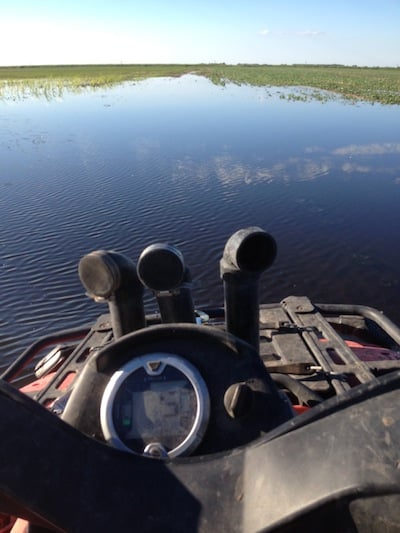
Wet soils cause an oxygen deficiency, which reduces root respiration and growth. Root failure reduces nutrient uptake, and plants will eventually die unless drowned areas dry out quickly.
A few days in waterlogged soil can be enough to kill canola plants, and yield loss is certain — although as canola plants age, they tend to be more resilient. Canadian studies with cereals and flax have found that young seedlings (2 day) were more sensitive than older seedlings. Chinese research indicates the seedling stage is most susceptible, followed by stem elongation and pod formation, whereas the least vulnerable was the flowering stage. However, one European study reported greater biomass reductions with waterlogged 11-day-old B. napus seedlings than 5-day-old.
Waterlogging can cause premature bolting and flowering as a survival response to the stress.
Consider top up fertilizer after the crop recovers. Chinese research has reported some alleviation of waterlogging stress in canola by application of fertilizer (mainly N, but also P and K), and/or growth regulators. Trials have not been conducted in Western Canada to see if fertilizer and/or growth regulators help rescue waterlogged canola fields in our conditions. A flooded canola field would need to be still alive to justify adding additional fertilizer to aid recovery and yield, and thus it would be wise to wait until the waterlogging declines before topdressing. (Read the next article for more on the top dress decision after excess moisture.)
Click here for a full explanation of how waterlogging hurts canola.
Click here for AAFC agro-climate maps, including precipitation.

